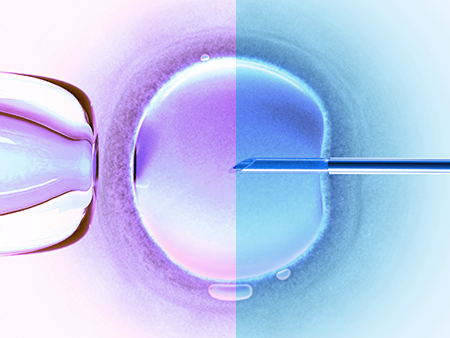
Choosing your baby's sex: Is it possible?
Many techniques claim to let people choose the sex of their baby, but most are based on questionable science. We take a look at some of the different techniques here.
What is sex selection?
Sex selection is the idea that certain pre-conception techniques, both artificial and natural, can be employed towards the end of choosing a baby’s sex - either male or female. Although many individuals rely on these suggestions, the effectiveness of each method varies.
What are some methods of sex selection?
Sex selection techniques fall into one of two categories: assisted or natural.
Assisted sex selection usually involves medical intervention, and techniques include:
- Pre-Implantation Genetic Diagnosis (PGD): PGD can allow parents to select their child’s sex, since doctors surgically remove eggs and collect sperm from a semen sample and create embryos in a laboratory. They then only re-implant embryos of a specific desired sex. PGD is expensive, as it involves using in-vitro fertilization (IVF), embryo biopsy, and the costs of IVF medications; on average, it costs about $45,000 to have a child using this method. Many fertility centers only offer sex selection for “family balancing” after a couple already has one child and desires another of the opposite sex. Fertility practices within hospitals generally do not offer these kinds of sex selection services unless it is to avoid a sex-linked genetic disorder.
- MicroSort: A semen sample is collected and the sperm are sorted based on whether they contain an X or a Y chromosome. MicroSort claims a success rate of about 90% for female babies and 75% for male babies, and carries a cost of more than $3,000. Once the sperm is sorted, the next step is intrauterine insemination, a non-invasive procedure that injects the sperm into the uterus, which has about a 20% success rate each cycle (which is the same as your chance of getting pregnant on your own). It was not approved by the FDA and is therefore banned in the United States, but it is currently available in Mexico and the Mediterranean island of Cyprus.
- Ericsson Method: A semen sample is collected and spun down so that male and female sperm are separated with a moderate level of purity based on a very slight difference in the speed with which the two different sperm can swim. The next steo is artificial inseminated, much like with MicroSort. The sorting itself costs about $1,000 per cycle, which has about a 20% chance of working. Although the original study on this procedure claims a success rates for sex selection of about 70%, many subsequent studies have questioned its efficacy. Currently the scientific community is split on its efficacy.
Natural sex selection techniques are cheaper, but employ far more questionable science. These include:
- Shettles Method: The Shettles Method claims that sperm containing an X chromosome are stronger, but are slower swimmers than those containing a Y chromosome. The method suggests that in order to have a male baby, you should have intercourse as close to the day of ovulation as possible so that the fast sperm can get there quickly, instead of having to survive in the vagina and uterus for a longer period of time. The method also suggests that deeper penetration for sperm emission and female orgasm favors having a male baby, as it creates a less acidic environment for the slightly more fragile Y-containing sperm.
- Whelan Method: The Whelan Method suggests the exact opposite of the Shettles Method, claiming that to have a male baby you should have intercourse about 4 to 6 days before ovulation, and for a female baby as close to the time of ovulation as possible.
What does the larger medical community have to say about the efficacy of sex selection?
The science shows that most of these techniques, particularly the natural, non-assisted ones, are ineffective. In fact, the New England Journal of Medicine published a study that found there was absolutely no practical association between the timing of intercourse and the sex of the baby. Sex selection seems to be one of those things best left up to nature, as efforts to influence sex are almost certainly ineffective.
Read more
Sources
- Allen J. Wilcox, M.D., Ph.D., Clarice R. Weinberg, Ph.D., Donna D. Baird, Ph.D. "Timing of Sexual Intercourse in Relation to Ovulation — Effects on the Probability of Conception, Survival of the Pregnancy, and Sex of the Baby." The New England Journal of Medicine. 333:1517-1521. Web. 12/7/1995.
- RH Gray, et al. "Sex ratio associated with timing of insemination and length of the follicular phase in planned and unplanned pregnancies during use of natural family planning." Hum Reprod. 13(5):1397-400. Web. May 1998.




